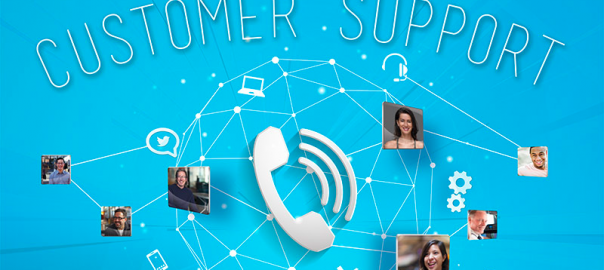
When Alexander Graham Bell debuted the first telephone in 1876, you couldn’t buy just one.
You had to buy two.
One for you.
And one for whoever else you wanted to talk to.
If you needed to connect with a second friend or business associate, you’d have to buy another pair of telephones.
Oh, and every time you purchased a pair of telephones, you had to have a contractor come out and install the wiring between your two phones.
It was nearly twenty years later (1894) when the switchboard was invented, finally making the use of telephones more practical for the mainstream. Still, it would take 50 years for Bell’s invention to reach half of the U.S. population – 80 years until nearly everyone had access to a telephone.
The Moral of the Telephone Story
My point in sharing this story with you is that it’s easy to take the telephone for granted as a staple in the customer service industry.
The fact that you can pick up a phone and speak to another human being for product support is revolutionary.
The fact that this level of human connection is free, easy, and less of a hassle than it was even, say, 15 years ago… is remarkable.
But we often take it for granted.
Today’s world of digital customer service and responsiveness is more human than ever before… and it all started with the telephone.
A new infographic from Salesforce’s Desk traces how we got from the early days of customer loyalty programs (by “early,” think 1793) to crowd-sourcing websites via Pinterest.
Human Connection In Digital Customer Service
For the full rundown, see the infographic below. Examining the human aspect of the customer service business, here are a few important milestones to know about:
- July 1995: Amazon launches, allowing consumers to enjoy an online customer service/shopping experience like never before. In October 1997, Amazon served its one-millionth customer!
- 1996: Email and live chat support enters the digital customer service scene.
- 1996: Nordstrom offers free shipping and free returns.
- 1999: Customer service legends Zappos gets off the ground.
- 2010: Facebook/Twitter customer service (see #2 here) becomes standard. More consumers turn to social for customer service.
Key Takeaways: How Your Brand Can Be More Human
- Responsiveness in social media is essential. In fact, 42% of consumers expect a response on social media in 60 minutes or less.
- Consumer engagement is soaring. The level of consumer engagement with companies on Facebook and Twitter has grown by 178% from the end of 2012 to end of 2013.
Be present. Listen. Respond!
Do You Think Social Customer Service Makes Brands More “Human?”
What has your experience been like as a consumer? As a marketer? As a business owner? I’d love to hear your thoughts in the comments below.
(243)





